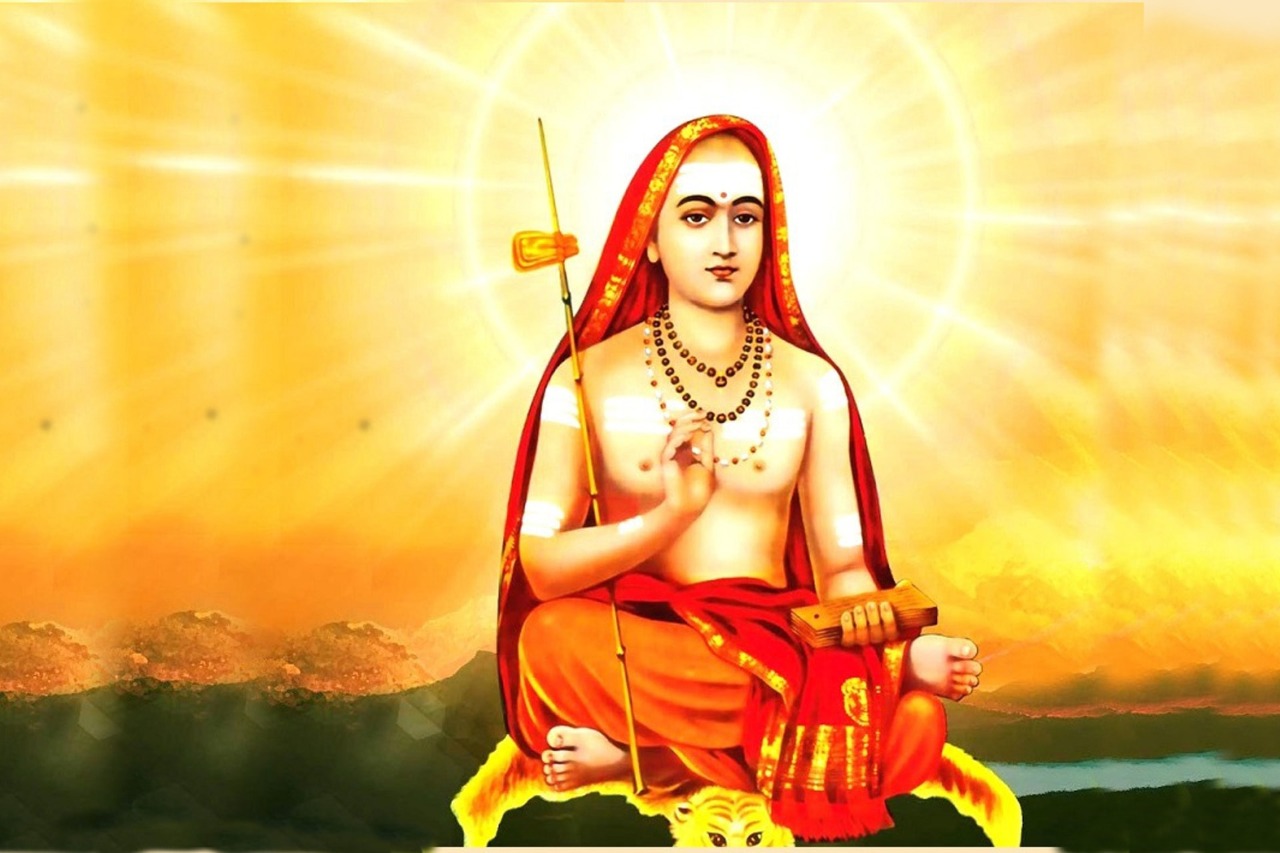About Adi Shankara
Sanatana Dharma (Hindu religion) is a way of life. It encompasses the whole life and has an impact on the whole human personality. Sanatana Dharma has essentially been individualistic rather than congregational. By the process of intuition and experience, our ancient Rishis discovered methods of delving deep into unknown strata of Self and into the secrets of the Universe.
The Vedas, the Upanishads and the various Dharma Sutras, were the result of intuitive perceptions, revelations and experiences of the Rishis, communicated by them to their Shishyas. Each of the several systems of philosophy thus represented a spiritual experience or revelation.
Later there came a period when there was much infight among multiple religious sects. Controversies and chaos pervaded all through India in the matter of religion and philosophy.
It is during this period, Adi Shankara took birth to re-establish the religion of Vedas. Shankara was the most extraordinary genius, an exquisite thinker, sweetly emotional and relentlessly logical, a personality scintillating with the vision of Truth.

The survival of Sanatana Dharma can be mainly credited to the spread of Advaita temper that Shankara propagated, which saw no distinction between Shaivam and Vaishnavam and other sects and which therefore put an end to internal fights. Shri Shankara underlined the essential unity of all ‘sampradayas’ (traditions) and sects and saved Hinduism from disintegration. Single-handedly, Sankara restored the Vedic Dharma and Advaita Vedanta to its pristine purity in the land with his excellent commentaries on Brahamasutras, Upanishads and the Bhagavad Gita.
Sankara, identified that the major cults could be identified in line with six principal deities of the Hindu pantheon – Ganapathyam (the worship of Lord Ganesha), Kaumaram (the worship of Lord Kumara or Karthikeya), Sauram (the worship of the Sun God), Shaktham (the worship of Goddess Shakthi), Shaivam (the worship of Lord Shiva), and Vaishnavam (the worship of Lord Vishnu). These six major streams of Hindu worship are referred to as Shanmatham.
He achieved this by travelling widely all over the country, debating with the heads of each of these cults, accepting their beliefs, at the same time aligning their thoughts with the ancient Vedic treatises and streamlining the expression of their Bhakti in the form of elegant modes of worship. Not only were the heads of these cults convinced by Sankara’s arguments, but they also ended up as his disciples. Shi Shankara Bhagavadpada taught us the truth that all deities whom we hereditarily worship are nothing but the manifestations of the Supreme Self – Paramatman.
Thus he established the worship of Siva, Vishnu, Ganapathy, Shakthi, Surya and Karthikeya, i.e the Shanmatha Sthapana. These are all sanctified by the Vedas. Each deity has a specific Gayatri Manthra.
It is due to Shri Adi Shankara Bhagavadpada and his prayers and compositions on the deities of various temples across India that the temple worship and festivals associated with the temples saw a great revival.
He established great Mutts in different parts of India to consolidate the spiritual values of traditions of Hinduism. Above all, he was the unifier of the religious consciousness of India. Fear results from the erroneous cognition of plularity. Fearlessness is obtained when the non-dual Absolute is realized.
Adi Shankaracharya propagated the philosophy of Advaitha throughout the length and breadth of India and consolidated such a heritage.
